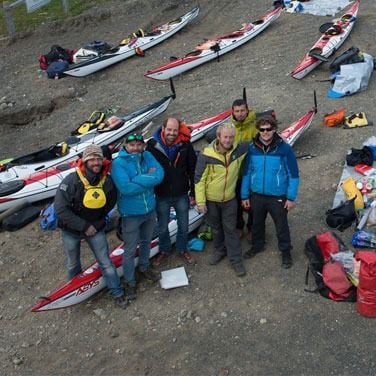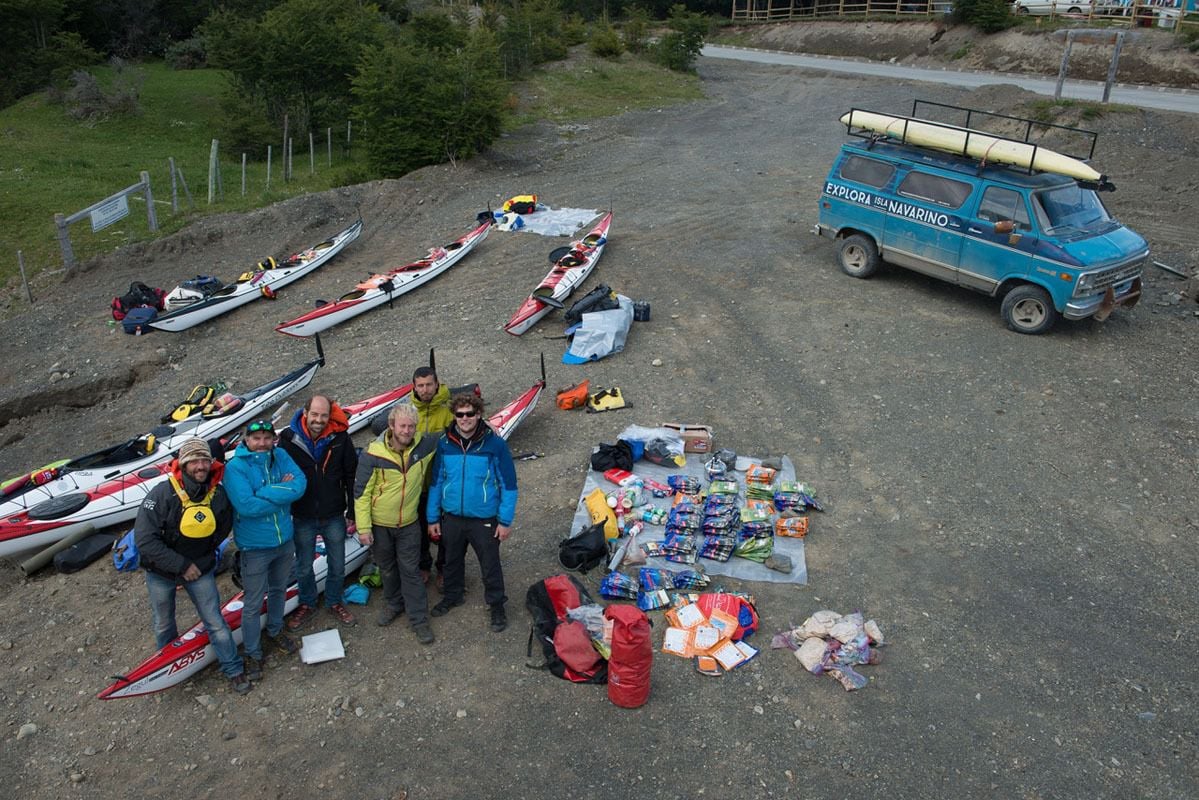
CAPE HORN PROJECT
Sailing all the way to Cape Horn on a sea kayak without assistance. This is the somewhat crazy challenge that 6 kayakers set themselves last winter.
40 years after the first expedition, they paddled following the pioneers’ tracks heading for a legendary cape in extreme weather conditions – storms, icebergs, wave trains several meters high, strong winds sometimes blowing at over 180km/hr and temperatures below zero.
Of these 500 kms travelled with the strength of their arms in 17 days of total self-reliance, the six kayakers made a movie out of it.
Boris Doye, kayaker and video maker, tells us about the adventure and explains how they used their CROSSCALL ACTION-X3 smartphone to brave all the dangers of this cape.
BORIS, TELL US ABOUT THIS “CAPE HORN PROJECT” EXPEDITION
Cape Horn is the legendary cape that fascinates all sailors because of its landscapes and particular conditions. We set off in a group of 6 kayakers in December 2017 and our project was about cruising our way around Cape Horn, island by island.
We paddled in the footsteps of the first American expedition in 1977, only with hardly any assistance this time around. The Chilean army made it an obligation for us to have a boat following us, but we were acting as if it wasn’t even there.
It took us 17 days and we paddled for 500 kms in total self-reliance with boats weighing up to 80kgs. Let’s just say it was all but easy! The weather conditions are really harsh and even mentally, it’s hard.
Besides icebergs, we caught some storms with waves that could be a few meters high, strong currents, temperatures between -5°C and 5°C, winds blowing at 50km/hr on average with peaks of 180km/hr. Well, it was insane!
HOW DID YOU USE YOUR ACTION-X3 DURING THE EXPEDITION?
Besides a router that was guiding us through sat phone as well as our paper maps, we had downloaded all the sea maps on the Navionics app before leaving.
We were being guided simply by activating the GPS mode. We would have a recap moment regularly during the day to cross-check our information and find out where we’d got to in terms of our route.
The weather can change in ten minutes out there and there are some phenomenons you just can’t foresee, that’s where an efficient GPS comes in handy to help you find your way through the fog or shelter in a creek during squalls. Which happened to us more than once.
The phone was in our jacket’s pocket the whole time; it was constantly covered in sea water and it had no issues at all. We had put a floating case on it which is very handy on a sea kayak, and we were very pleased with that. In terms of battery life, we would charge our phone every two days with our solar panels.
We had a bit of a hard time with the Chilean Army who wouldn’t stop coming to check on us. Then we stored all our papers on the Drive app so we could show them during their unannounced inspections…
I also used the ACTION-X3 a lot for the actual making of the film. I recorded the kayakers’ sounds and voices with a microphone linked to the phone, which was placed in their jackets.
For aerial views I was piloting my drone [DJI Mavic Air] with the phone. Its large screen is extremely practical, its battery level lasts longer and the fact that it’s waterproof is just really cool.
PICTURES







 Choose your country and language
Choose your country and language